Jun 14, 2025 – Potato Harvest, Standing Committee Meeting for the 1000-Day Practice Preparation, Dharma Q&A at Jungto Dharma School
Hello. Today, Sunim woke up at Dubuk Jungto Retreat Center after a long time. It rained continuously throughout the night, and the heavy rain continued into the morning.

After completing morning practice and meditation, Sunim headed to the greenhouse to do farm work.
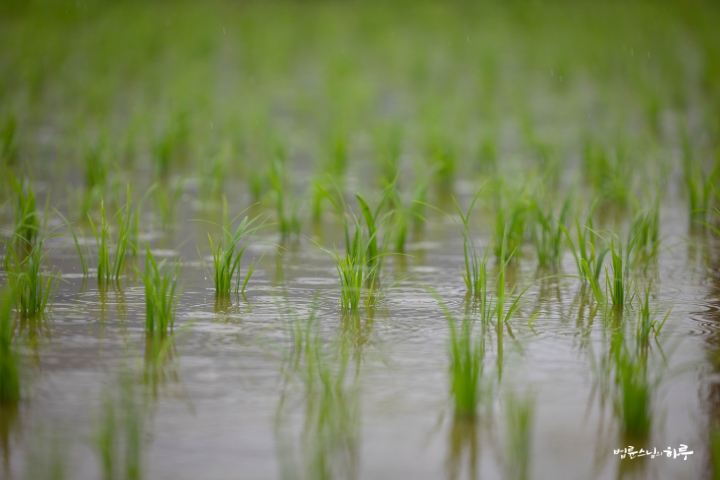
Practitioners from the Seoul lay Sangha had also come down to Dubuk yesterday for communal work. Together, they harvested potatoes in greenhouse number 1.
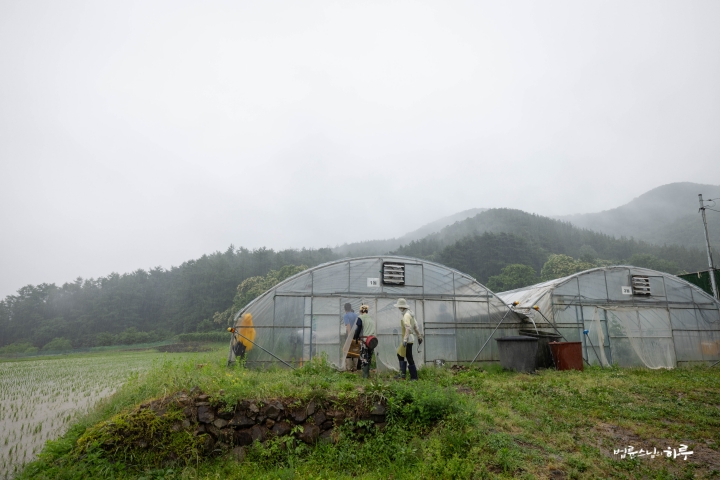
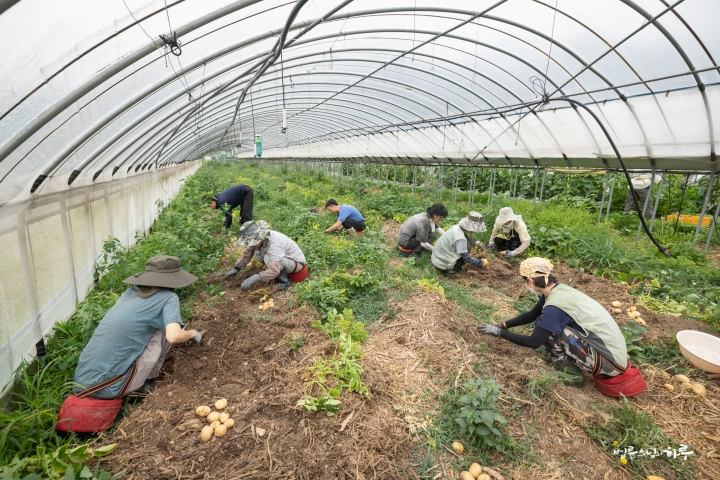
The rain made the inside of the greenhouse cool. The soil was crumbly, perfect for harvesting potatoes.
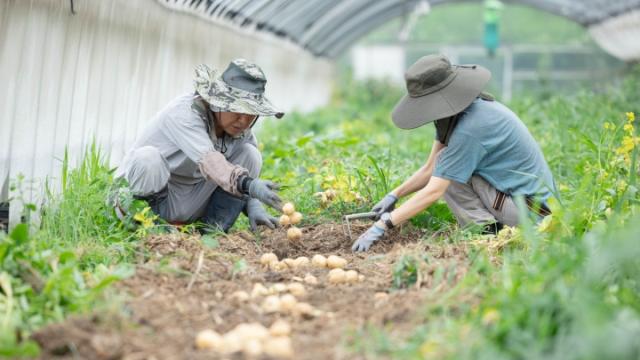
Watching the practitioners harvest potatoes, Sunim gave them additional guidance.
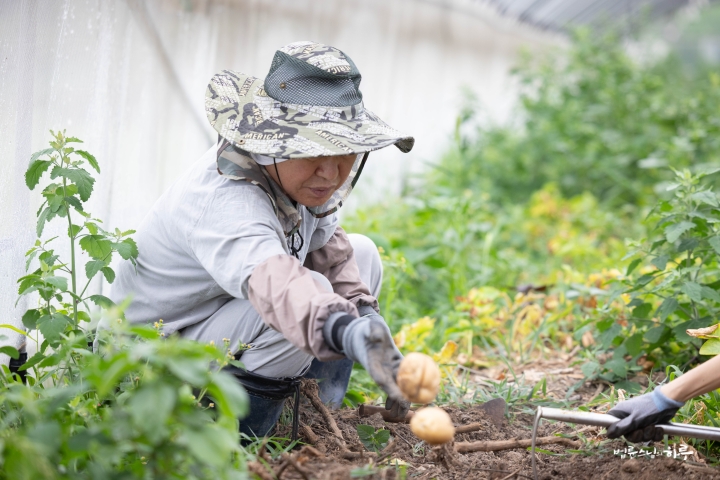
“Please be careful not to damage the potatoes. And you need to dig deep into the ground.”
Following Sunim’s instructions, the practitioners dug carefully but deeply. Hidden potatoes began to appear.
“When we follow the Dharma Teacher’s advice, the potatoes come out!” (Laughter)
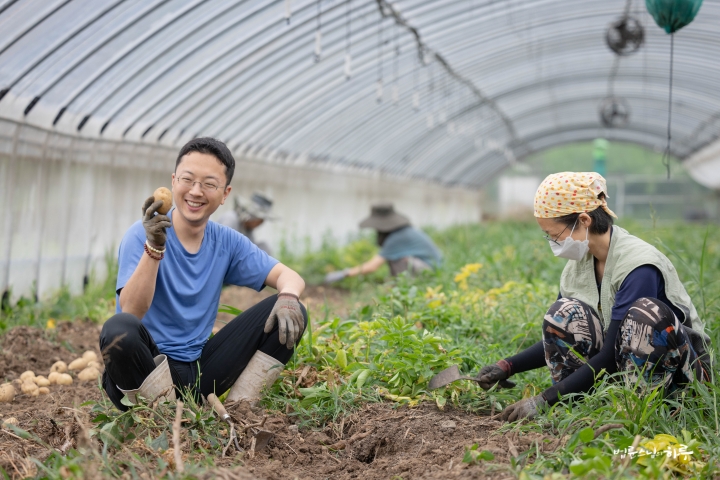
Sunim also demonstrated his farming skills after a long time, expertly harvesting potatoes.
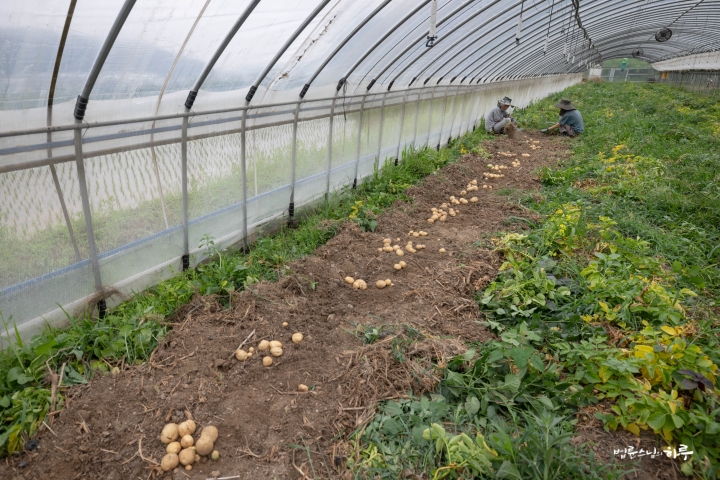

“Break time!”
Everyone put down their “homi” tools (Korean hand hoe for farming and gardening) and gathered at the farm shelter to eat snacks together and catch their breath.
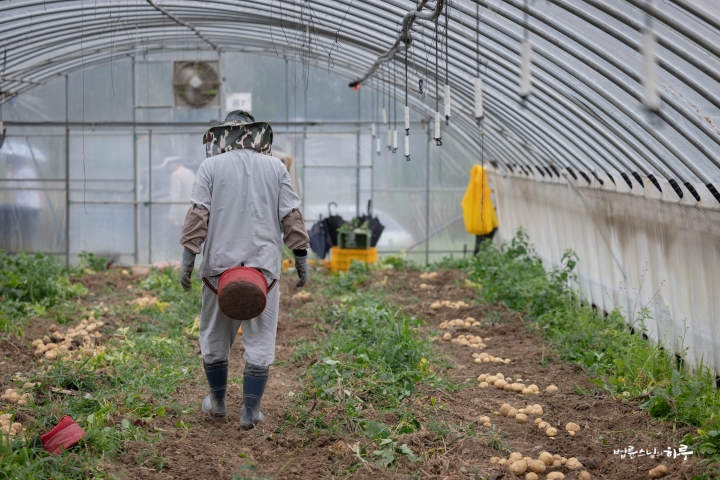
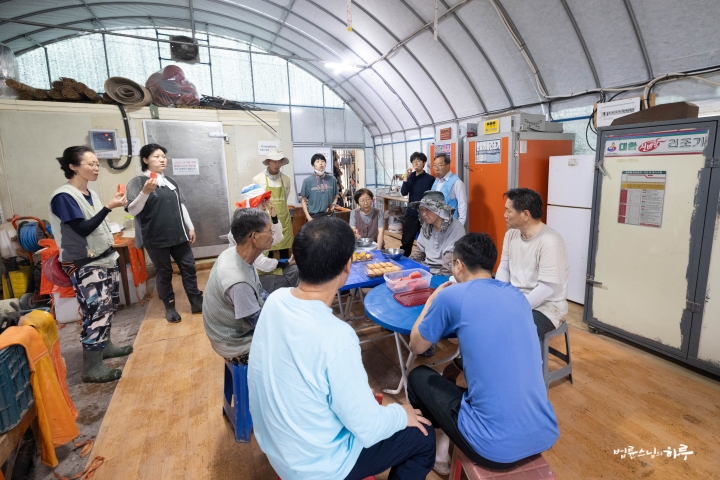
They brought the largest potato and placed it on the scale.
“Wow, it’s 600 grams!”
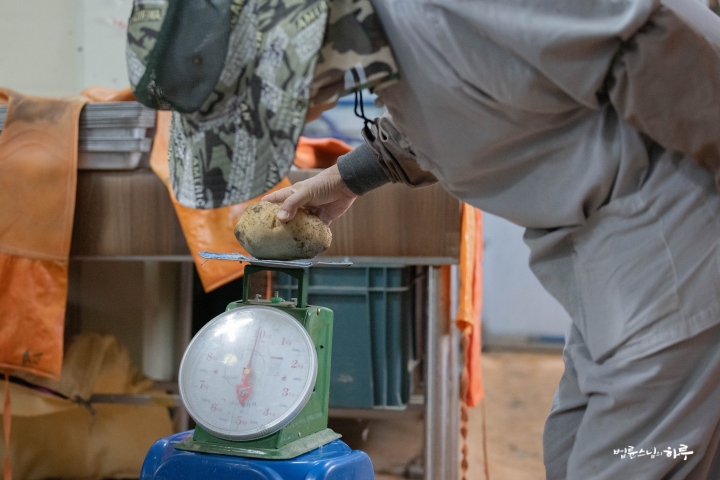
After finishing the snacks, Sunim asked for the practitioners’ understanding.
“I have an online meeting at 10 o’clock, so I’ll head down.”
Sunim went to Dubuk Jungto Retreat Center for the meeting, while the practitioners picked up their homi tools again and continued harvesting potatoes.
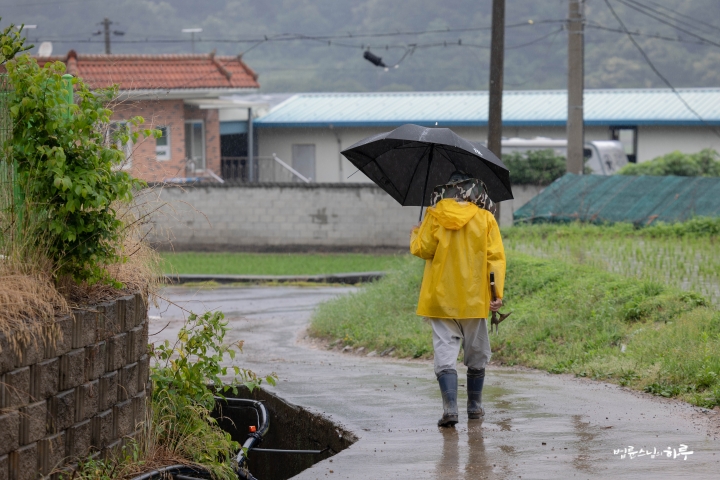
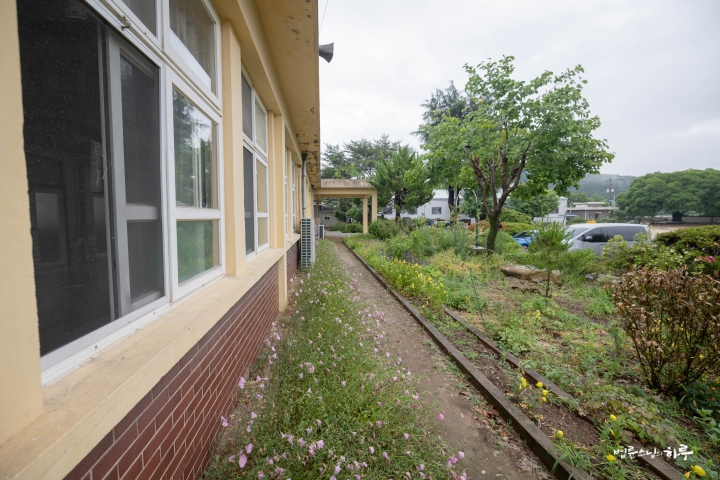
From 10 AM, Sunim held an online meeting with the Jungto Society Standing Committee for the 1000-Day Practice Preparation. After reciting the Three Refuges and Words for Practice, Dharma Teacher Beopjeong, who serves as the chairperson of the 1000-Day Practice Preparatory Committee, presented the business direction for Jungto Society’s 2-2nd 1000-Day Practice based on previous discussions.
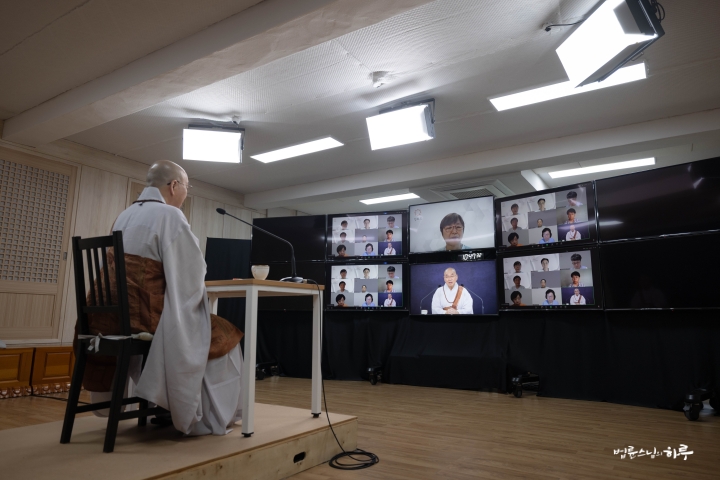
“The first 1000-Day Practice of the second 10,000-Day Practice aimed to expand and grow online Jungto Society. We quickly and flexibly changed the operational structure and membership system to transition to an online organization. While we started with the expectation that the online transition would lead to quantitative expansion, we observed stagnation in various indicators. Therefore, we plan to develop an organizational structure suitable for the online environment and establish a consistent research system. We have prepared a business plan to transition from a learning-centered academic operation to an educational approach that implements practice and volunteer work in daily life.”
He then discussed the draft business plans prepared for each area, including online system development, experience-centered educational innovation, plans to strengthen practical activities, and expansion strategies for global Dharma propagation and youth outreach.
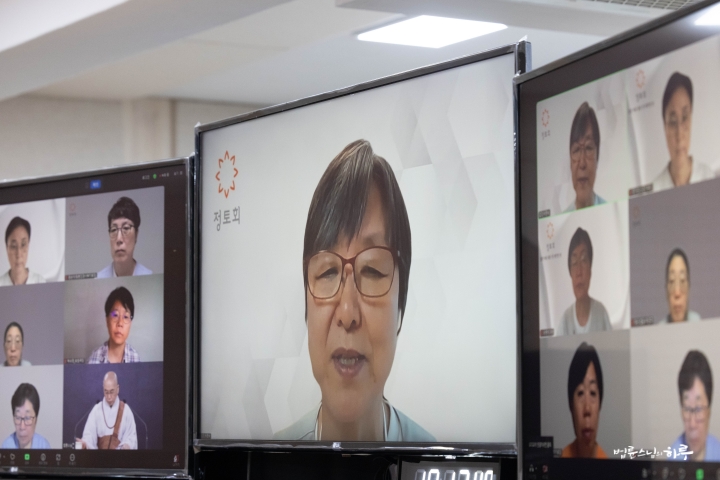
After listening carefully to the presentation, Sunim shared his thoughts on what needed to be supplemented in the business plan developed by the Preparatory Committee.
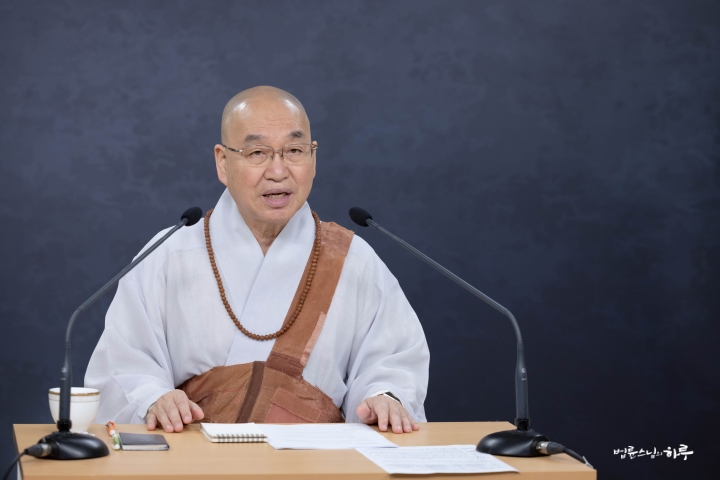
“If Jungto Society had been founded and operated online from the beginning, the operating system would have developed significantly to suit online needs. However, the previous Jungto Society actively operated central and regional organizations tailored to offline operations. Currently, Jungto Society is fundamentally based offline but has transitioned its operating system online. There are roughly two reasons why Jungto Society, which was based offline, could quickly transition online.
Reasons Why Jungto Society Could Quickly Transition Online
First, all Jungto Society members consistently continued the 1000-Day Practice of praying at home without coming directly to the temple. Second, we operated dharma assemblies by listening to recorded dharma talks. Listening to recorded dharma talks is essentially the same whether at home or at the dharma center, so there are no spatial constraints. If Jungto Society had operated like a typical temple, transitioning online might have been difficult. However, due to these two factors, Jungto Society had the basic conditions necessary for online transition.
While some companies like Amazon, an e-commerce site, started online from the beginning, others like department stores operated offline stores before incorporating online operations. Jungto Society can be seen as an organizational system like a department store that was offline and then adopted online methods. Therefore, when evaluating online Jungto Society, we can continuously point out online shortcomings based on offline advantages. To continue developing as an online Jungto Society in the long term, we need to develop a new system that starts online from the beginning, not based on offline operations. I think this completely online-based new system should be created by the international divisions. International divisions should be able to hold dharma assemblies only online and conduct all practical tasks online without worrying about offline operations at all. If the international divisions’ online operating system succeeds, each Korean division can decide whether to adopt it or operate separately from the international divisions. The online system is an issue that requires continuous experimentation and development in the future.
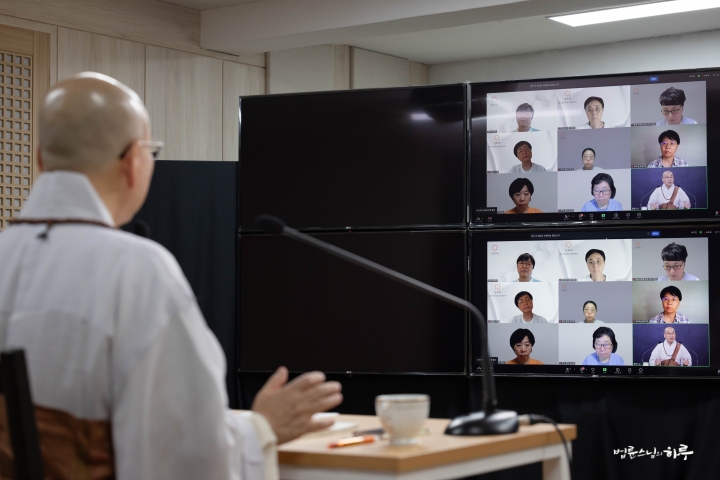
Jungto Centers in the City, Main Temples in Nature
To break through the current stagnation, what Jungto Society can do now is to supplement offline programs to improve the limitations of the existing online system. Since Jungto Society originally started offline, I believe that by slightly reinforcing this aspect, we can create a much greater synergistic effect together with the online system. The question is to what extent we should strengthen the offline programs. During the past 100 days, the Seoul Jungto Social and Cultural Center experimentally conducted the 100-Day Dharma Talk program, which allowed us to gauge its potential to some degree. Additionally, the main temples located in various regions across the country are playing a certain role as offline spaces.
However, we need to consider whether the current role of the main temples is sufficient, or whether it would be better to establish new regional Jungto centers at least at the metropolitan city level for each division. For example, we should consider whether it would be necessary to create Jungto centers in Busan for the Busan-Ulsan Division, in Daegu for the Daegu-Gyeongbuk Division, in Gwangju for the Gwangju-Jeolla Division, in Daejeon for the Daejeon-Chungcheong Division, in Ilsan for the Incheon-Western Gyeonggi Division, and in Suwon or Bundang for the Incheon-Eastern Gyeonggi Division. For people living in rural areas, online activities are much more convenient because of the long travel distances to cities. However, in large cities with short travel distances and concentrated populations, there is a need to supplement offline spaces. While densely populated areas may need spaces that can serve as hubs for administrative and practical activities, I think it would be better for the main temples to serve as places where people can feel like they are going outdoors. This division of roles can further strengthen the function of Jungto Society’s main temples. The reason why traditional temples located in mountainous areas are all operating well is that they allow people to feel the openness of expansive natural spaces away from the city. Similarly, Jungto Society’s main temples need to be activated in a more public-friendly manner. Therefore, each main temple should expand its service facilities for the public. They should be developed into wellness spaces equipped with prayer spaces, education and training facilities, travel spaces, and accommodation facilities. Furthermore, we should enable elderly people to reside at the main temples and even hold funeral services when they pass away. Although not yet implemented, this content is already included in Jungto Society’s business plan.
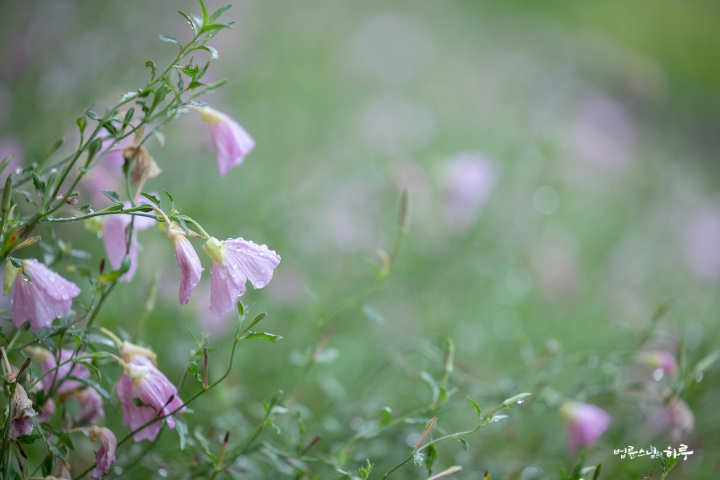
Along with operating main temples, we need to consider whether Jungto Centers are necessary in major cities. We need centers that can comprehensively utilize at least 3 to 4 spaces, not just places with Dharma halls, but including assembly halls for members to gather and spaces for foreign workers. At the division level, we need to examine whether spaces are needed that can utilize buildings of at least 70 pyeong (about 231 square meters) with 3 to 4 floors, using each floor differently.
These issues concern how to supplement offline activities. This means supplementing both spaces and programs. Efforts to revitalize main temples can also be seen as supplementing offline activities.”
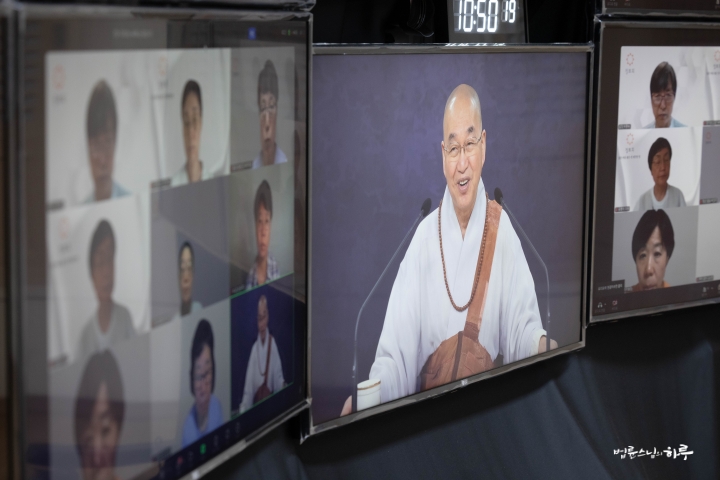
Following this, the 1000-Day Practice Preparation Committee members freely asked questions to seek Sunim’s advice. After two hours of Q&A, as the meeting was coming to an end, one person asked a final question.
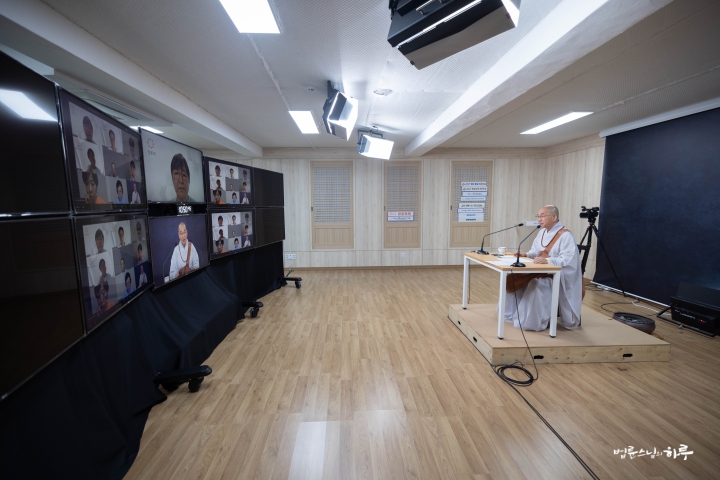
“I’m wondering if there are any areas you’d like to supplement regarding our current analysis and diagnosis of the situation and causes, or if we should proceed with researching future business directions based on what we have.”
“I think you can proceed with your research at this level. In the past, when I heard discussions, supplementary measures would come to mind immediately, but now, perhaps because I’m getting older, my thinking ability doesn’t seem as quick. If I took time to look at each item individually, I would think ‘this could be supplemented this way,’ but right now my overseas schedule continues, so I can’t promise when I’ll be able to provide supplementary suggestions. When I go abroad, if I have time on the plane, I’ll take a look.”
Sunim encouraged the committee members for their hard work and concluded the meeting.
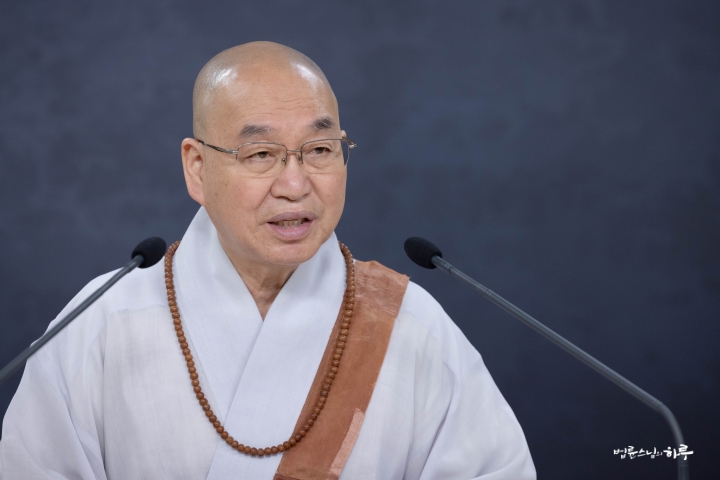
After leaving the broadcasting room, Sunim immediately headed to the Dubuk Retreat Center office to greet guests.
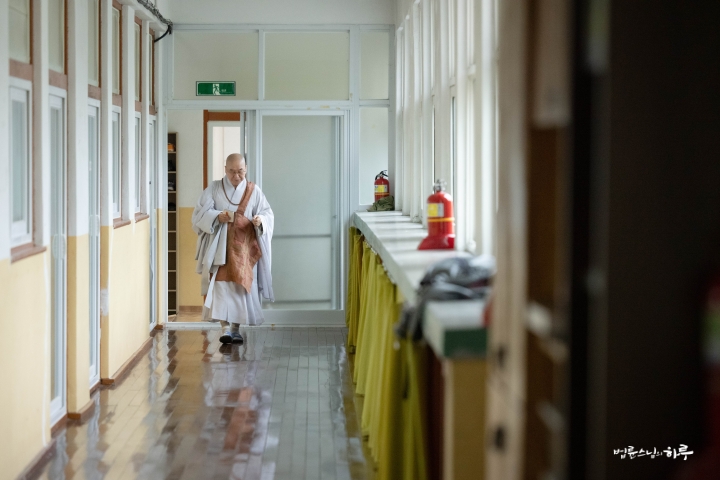
Venerable Songmuk and Venerable Mujin, along with two elderly bhikkhunis from Hampyeong in Jeolla Province, had long wanted to meet Sunim and visited Dubuk Retreat Center today. After exchanging warm greetings, they had lunch together.

Members of the Seoul lay Sangha who had come down for farming work prepared cold noodles. They conversed while eating the cold noodles.
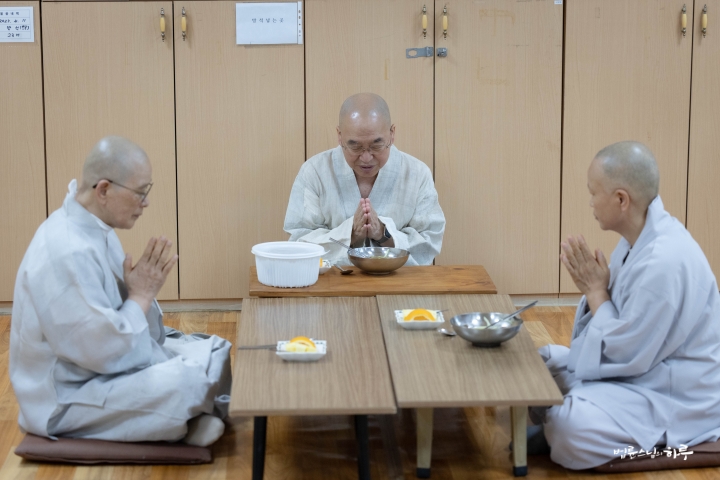
“This Dubuk Retreat Center is the elementary school I attended. We’re renting this closed school space and using it for farming and retreat purposes. During the COVID pandemic, we set up broadcasting facilities in one classroom, and currently we’re using it as an experimental site for producing safe food in the era of climate crisis.”
Venerable Songmuk explained the reason for making the long journey.
“I heard you were giving the 100-Day Dharma Talk, so I waited for it to finish before coming. Actually, I’ve wanted to make an offering to you ever since you received the Magsaysay Award in 2002, and I’ve always wanted to meet you.”
After finishing the meal, they moved to the office for tea and conversation. Venerable Songmuk shared the detailed story of why she came to make an offering.
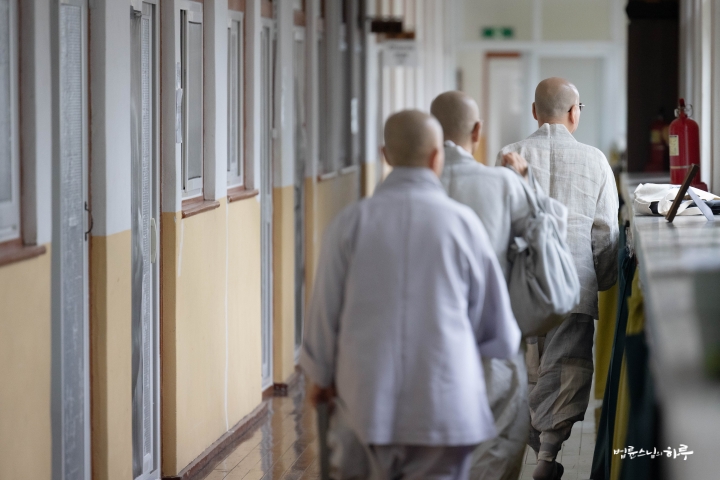
“I’ve been on pilgrimage to India’s sacred sites several times. When I went to Sankasya, where the Buddha is said to have descended from heaven after teaching his mother, I found that Hindus had built their own shrine on top of the stupa. Pilgrims couldn’t tell at all that it was a Buddhist sacred site. It looked so unfortunate that I wanted to make an offering to help develop the Sankasya sacred site. Since you do so much work in India, I thought if I made an offering to you, that work could be done, so I came here.”

Sunim introduced the work that Jungto Society is currently doing in Sankasya.
Peace Instead of Conflict, the Beginning of Sankasya Buddhist Project
“That’s right. Jungto Society is currently working on a sacred site development project in Sankasya. When you go to Sankasya, you’ll see a Hindu temple built on top of the Buddhist stupa. This has caused disputes between the Sakya clan and Hindus over the stupa. One year, ten thousand Sakya people gathered for a demonstration. So I went and told the Sakya people this:
‘The Buddha spoke of peace, so even though this is about protecting the Buddha’s historic site, fighting like this doesn’t align with the Buddha’s teachings. Since this is a historical and cultural heritage site that no one can touch, I will build another stupa of similar size next to it for you. So please don’t fight.’
I made this promise to the Sakya clan. So 20 years ago, we purchased 4,000 pyeong (about 13,220 square meters) of land next to the Sankasya sacred site. Currently, we’re drawing up architectural plans to build a stupa on that land recreating the scene of the Buddha descending from heaven on a ladder, an assembly hall that can accommodate ten thousand people when the Sakya clan holds large gatherings, and lodging facilities for meditation retreats.
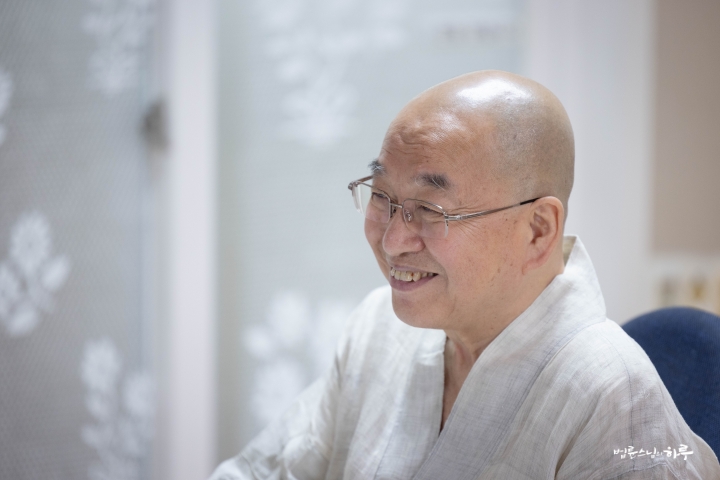
Initially, the Sakya clan members took the lead and provided support for the construction project, but they kept fighting with each other over money issues. So the construction work remained stalled. Two years ago, realizing that the project might never get done at this rate, Sunim dispatched two volunteers from Korea to Sankasia. They created architectural plans, and it was decided to begin construction of accommodations and a meditation center by the end of this year. So the Sankasia construction project is now underway. The donation you’ve given will be put to good use for the Sankasia project.”
“I would be truly delighted if that happens. I thought that if it’s Venerable Pomnyun Sunim, he would use this money in the most meaningful way. Thank you.”
Sunim took a photo with Venerable Songmuk and Venerable Mujin, and saw them off until they got into their car.
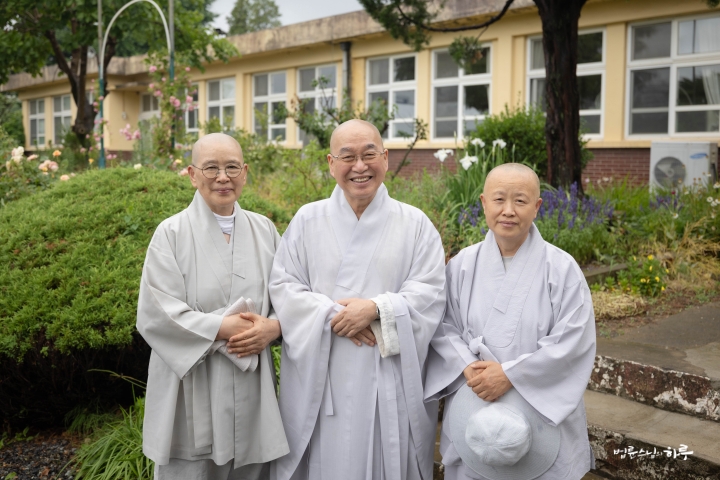
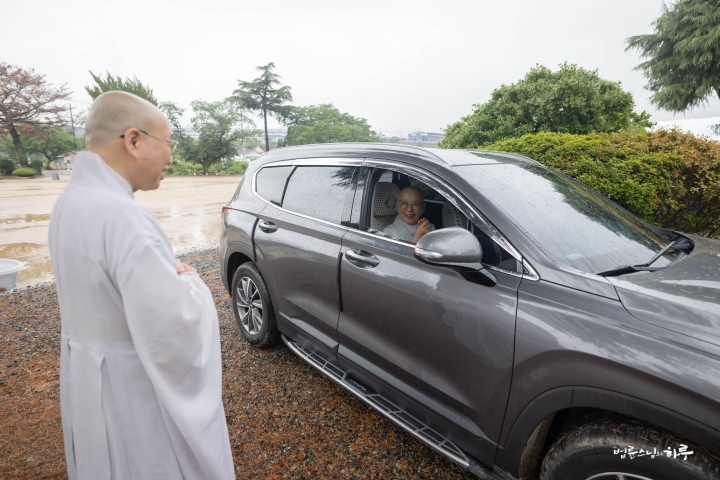
At 2 PM, Sunim moved to the broadcasting room for a live Dharma Q&A session with Jungto Dharma School students. After a congratulatory performance, everyone watched a video showcasing their class activities.
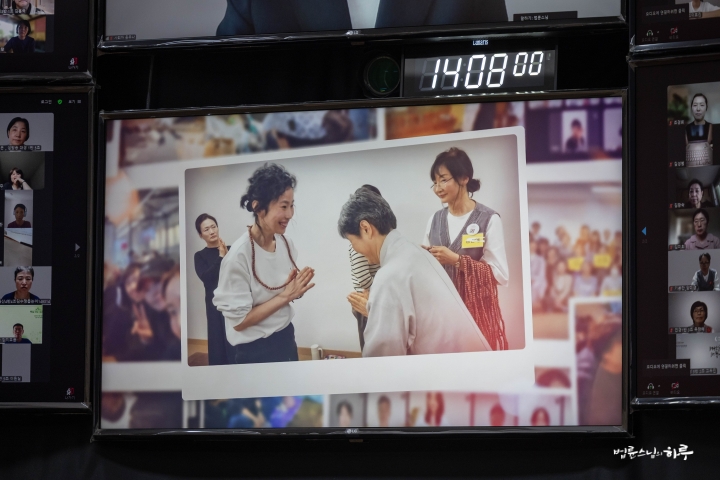
Three students then shared their reflections. Everyone gave enthusiastic applause to the students’ stories of the many changes they had experienced over the past three months.
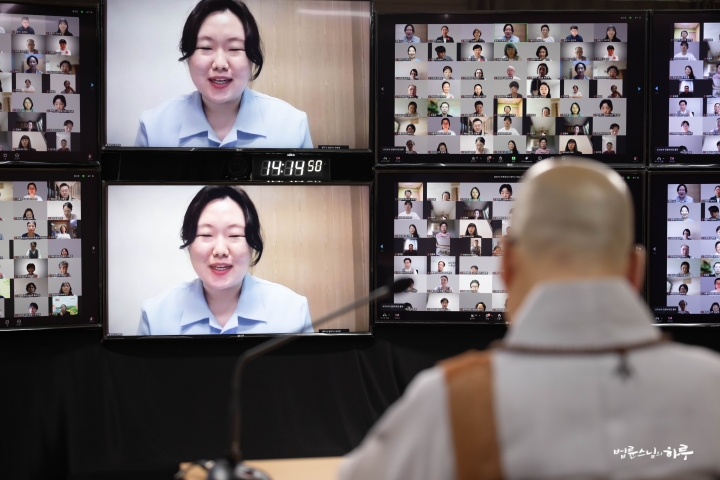
Next, all the students requested a Dharma talk from Sunim with three prostrations. Sunim first explained why students need to study “The Life of the Buddha,” which they are currently learning.
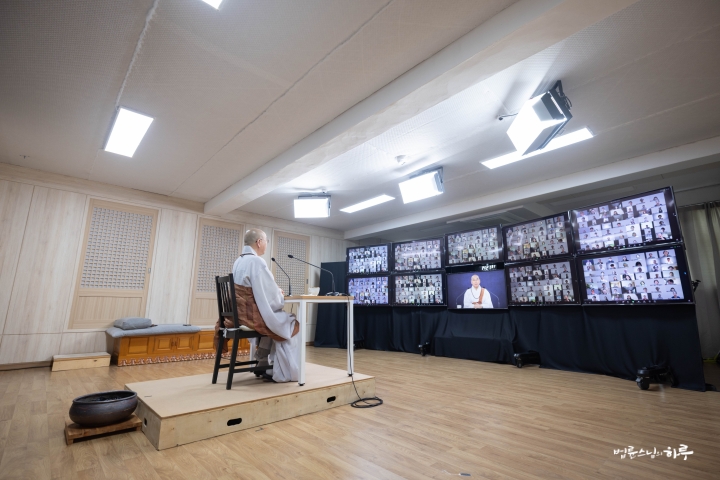
“Buddhism pursues a life of ‘nirvana’ – living without suffering anywhere, anytime – by realizing that all suffering arises from our own minds. However, in our reality, we face various forms of discrimination: racial discrimination, gender discrimination, religious discrimination, and class discrimination. These problems are difficult to solve by studying Buddhist philosophy alone. Rather, solutions to these real-world problems can be found by studying the life of the Buddha. The social perspective of Buddhism lies at its core in how Buddha, as a human being, viewed the world while facing various real-world problems during his 80 years of life. It’s not simply about studying the Buddha’s life, but most importantly about examining from what perspective the Buddha approached and viewed worldly problems in real society.
Why Must We Learn About the Life of the Buddha?
In Buddha’s time, Indian society had established the caste system as its social order, where human status was determined from birth through class discrimination. However, the Buddha rejected the caste system from the perspective of equality, stating that people should not be discriminated against based on their social status. In that era, there was also a perception that only men were people and masters, while women were subordinate beings like servants to men. But the Buddha stood for gender equality by allowing women to become monastics, demonstrating that women could exist independently without men. Thus, Buddhism’s social perspective can only be understood through the Buddha’s life. This cannot be known by studying Buddhist philosophy alone. That’s why we must study the Buddha’s life to find answers about how to view worldly problems in reality.
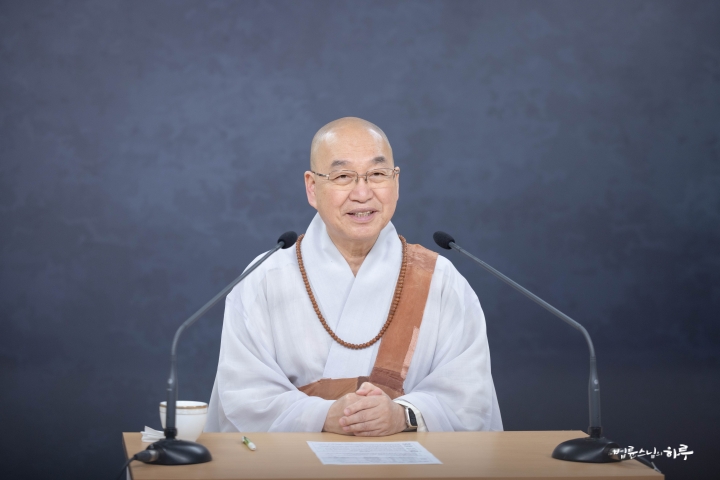
Climate Crisis, Poverty, War… When We View the World Through the Buddha’s Eyes
The biggest problem in our current reality is the climate crisis. Solutions for overcoming the climate crisis can be found when viewed from a Buddhist perspective. From the perspective of dependent origination (緣起), which sees people and people, people and nature as interconnected, nature is not an object to be conquered but a living foundation with which we must live in harmony. Environmental action movements should be carried out from this perspective. The most important thing is to have an attitude of stopping or reducing consumption to prevent the climate crisis.
The second problem is absolute poverty. Even today, approximately 800 million to 1 billion people worldwide remain in absolute poverty, representing 10% to 13% of the total population. They are in dire conditions where even basic survival is not maintained. All humanity has the right to survive. We must have a perspective of humanitarian aid that we should help them.
The third problem is war. People create conflicts and wage wars even when they have adequate living conditions. War causes enormous damage and brings tremendous suffering. Even now, various conflicts continue, including the Ukraine war and the Israel-Iran war, and this is a path humanity must absolutely not take. We must realize that our country is also still in a state of war, with the war between North and South Korea only temporarily halted. Peace activities are needed to completely end the war on the Korean Peninsula and establish a peace system where war will never occur again.
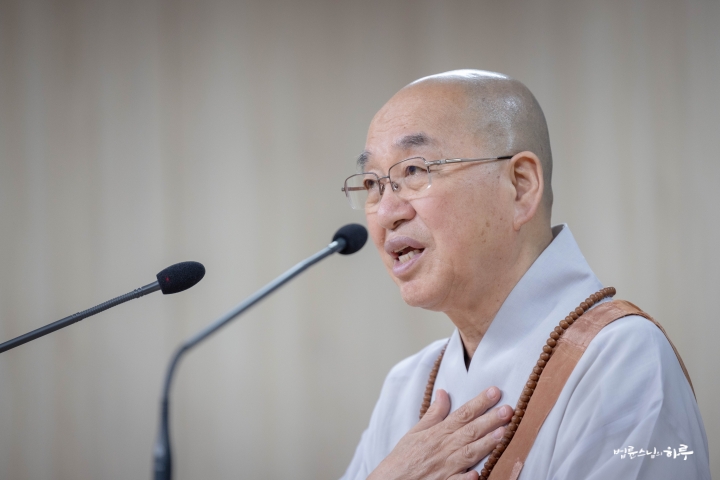
The reason we study the life of the Buddha at Jungto Dharma School is to learn how to properly view today’s environmental issues, poverty problems, and peace issues, and to apply those teachings to current problems. Jungto Society considers four issues as the most important tasks: environmental issues at the global level, absolute poverty at the humanity level, peace issues on the Korean Peninsula, and practice for individual happiness. Environment, relief, peace, and practice – these four are the path to a truly happy life. Buddhism is not just something with the name ‘Buddhism’ attached to it. Seeing reality correctly is Buddhism. When we are awakened to reality, there is no suffering; when we are ignorant of reality, suffering arises.”
Following this, Sunim received questions about various topics. Due to the special nature of this semester’s Jungto Dharma School being held during the 100-Day Dharma Talk period, the curriculum was divided into three classes: offline class, live broadcast class, and basic class. All students had completed the Practical Buddhist Thought course and were currently studying the Human Buddha course. Various questions followed. One person asked about how to manage anger, mentioning that she often feel rage welling up inside her.
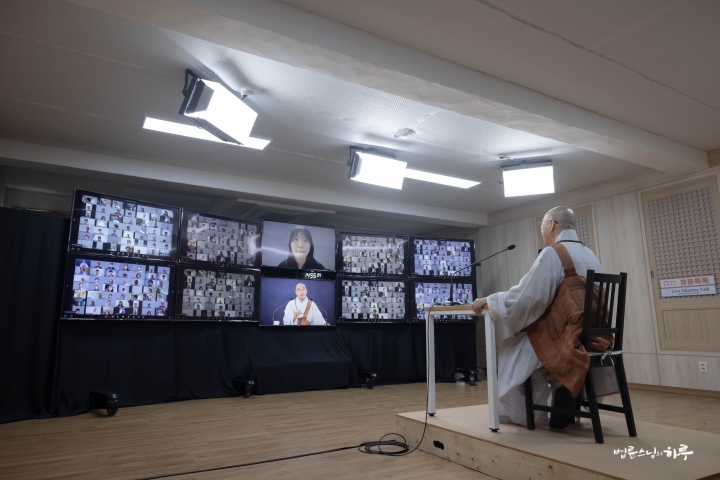
How Can I Release the Emotions I’ve Suppressed Since Childhood, This Anger?
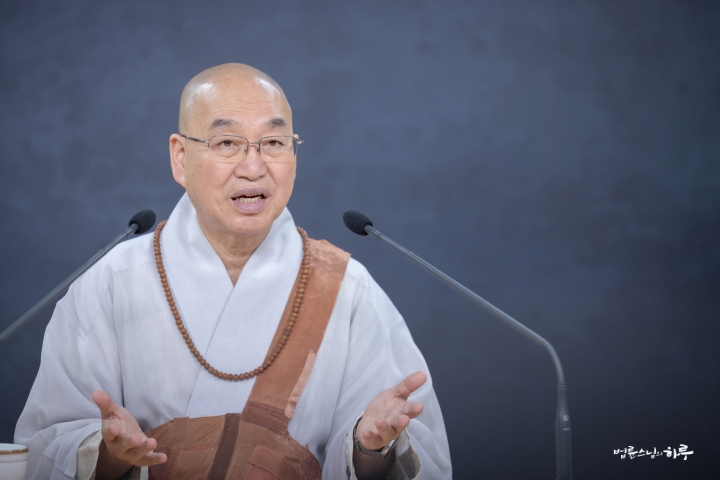
“If I knew an easy way to cure the habit of getting angry, I could probably make a lot of money. It’s not easy, but it’s not impossible either. Getting angry frequently indicates a strong tendency to insist ‘I am right’ and be stubborn. When you were young and your father shouted, ‘Don’t talk back! Just do as you’re told,’ you thought inside, ‘No, I’m right,’ but ultimately submitted to that force. Those suppressed emotions accumulate and turn into anger. That’s why children who grow up in strict or oppressive families may be obedient but also tend to get angry easily. At some point, they may explode with rage or have emotional outbursts, and some may act out when drunk. These phenomena all occur due to psychological suppression.
However, not everyone who gets scolded develops psychological suppression. If someone scolds you and you accept it saying, ‘I was wrong,’ no psychological suppression occurs. But if you suppress it thinking, ‘I’m right, but I’ll endure it because he’s my father,’ emotions accumulate and later explode. The ‘anger’ you experience might be exactly this kind of emotion. The stronger your stubbornness about being right, the more anger you have. To cure this condition, you need to understand that ‘nothing is inherently right or wrong.’ As you’ve learned in Jungto Dharma School, right and wrong don’t originally exist. But realizing this fact is the most difficult thing. In reality, we are just different from each other; there is no inherent right or wrong.
So it would be very helpful if you first pray with the Myeongshimmun (Words to Remember): ‘I will let go of the thought that I am right.’ Or you could pray with ‘There is nothing I can claim to be right about’ or ‘We are just different from each other.’ Choose one of these and practice with it. Anger arises because we stubbornly insist ‘I am right.’ You could also pray, ‘There is originally nothing right. I am lacking.’ If you continue praying like this, you’ll get less angry. But this alone is not enough. At some point during your prayer, you need to have a sudden awakening.
‘Although my father oppressed me, my stubbornness about being right was actually stronger!’
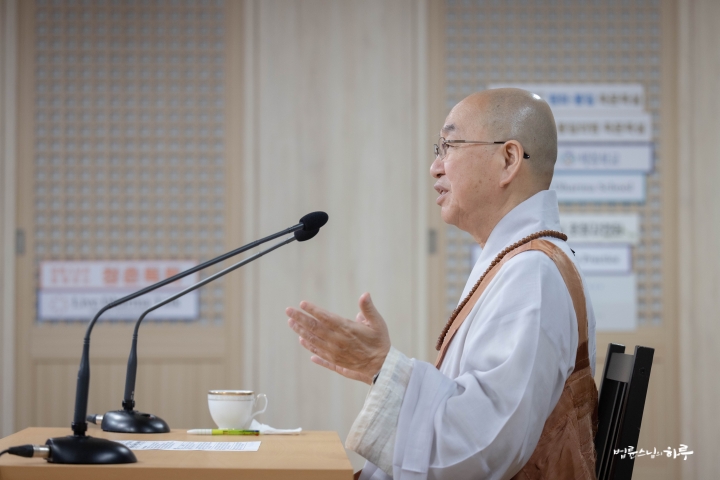
When you realize this, your anger will subside. When you submitted to your father, you were actually filled with feelings of contempt, thinking ‘You’re not even human.’ Your belief that you are right is deeply rooted. You need to let go of this stubbornness. It’s not easy, but if you keep bowing while saying ‘There is nothing that can be called right. I am lacking,’ at some point, like a blind person gaining sight, you’ll have a moment of realization: ‘I really was stubborn. My belief that I was right was so strong.’ Then your anger will decrease, and eventually you can live a life without anger.”
“As I mentioned at the beginning, I grew up in that environment from when I was a very young baby, and it seems like anger has been building up since then. While studying this practice, I’ve improved a bit, but I still feel like there are many wounds and feelings of suppression left inside me. Should I understand that even when I was that young, I had the thought ‘I am right’?”
“Yes. You were like that even as a child. There are two treatment methods. One is easier but not a fundamental cure, and the other is a fundamental cure but more difficult. The easier method is to understand and embrace the young child within yourself. You comfort yourself by saying, ‘You felt really wronged back then, didn’t you? It’s okay.’ You frequently soothe and comfort the resentment of the child within you. This method calms anger through consolation. However, the fundamental treatment is to pray while bowing, realizing ‘There is originally nothing that is right, but I was holding tightly to being right.’ Just like Galileo said ‘And yet it moves’ as he left the courtroom, you too held onto your righteousness in that situation. When children are wronged, most cry out in their hearts, ‘No matter what you do, right and wrong don’t change. I am right.’ Even while being hit, they absolutely won’t say they were wrong. That’s why parents shouldn’t push their children too hard. They might admit fault at first, but if pushed too far, they’ll rebel, insisting they’re right. So there’s no disciplinary effect, only wounds remain. First, there’s the method of regularly understanding and comforting the wounded child within you. Second, there’s the method of praying with the Words to Remember: ‘There is originally no right or wrong. There is nothing I can claim to be right about.'”
“Yes. I understand.”
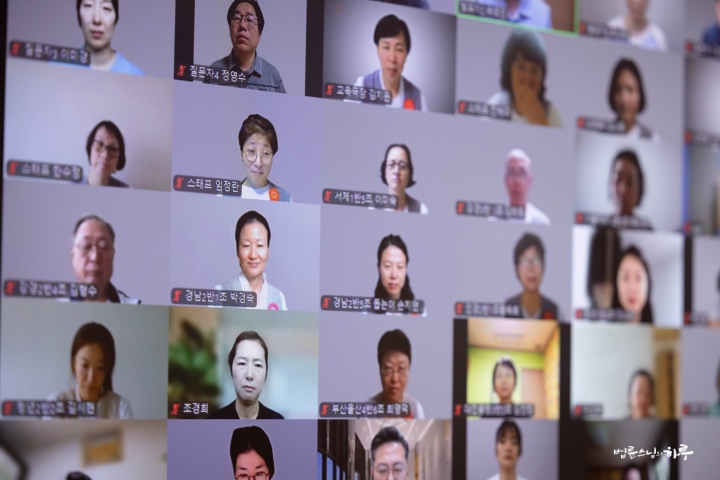
Questions continued one after another. After seven people had conversations with Sunim, the last questioner pressed the hand-raising button and asked Sunim a question.
Should We Have Understanding Even for Obviously Wrong Actions?
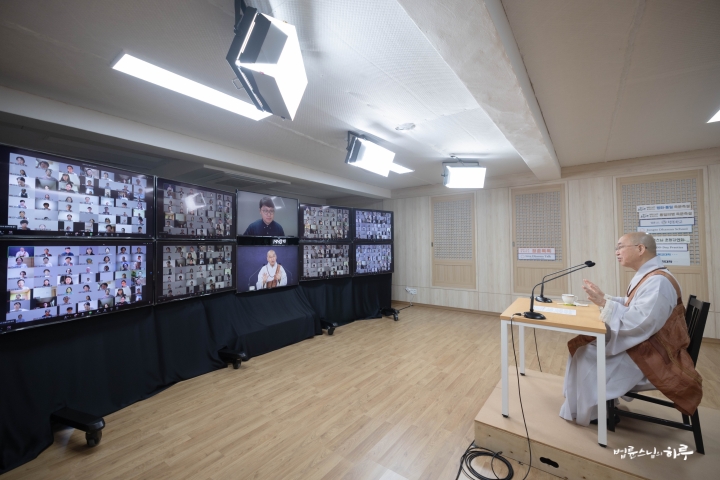
“Yes, that’s right. Because a practitioner aims to become someone who doesn’t get angry. By doing this, first of all, I don’t get angry. In a state without anger, you can say, ‘You shouldn’t throw trash there.’ Then improvement is possible. If something needs to be corrected, you can calmly improve it that way. But if you get angry, it doesn’t get fixed well and you only suffer.
Even if someone has an affair, what can we really say is wrong? From the spouse’s perspective, it’s naturally painful and they can say the other person is wrong. But from the other person’s perspective, they might like this person or that person. From my position, it feels like the other person is wrong, but there is originally no standard by which we can say ‘I am right and the other is wrong.’ If you understand that the other person could act that way, first of all, you won’t get angry. And if you don’t want to live with such a person, you can choose divorce. If you think it’s better to stay together, you can hold on. There is no other way. It’s like when you buy a new car and it gets scratched. If you don’t like seeing the scratch, you can sell the car. If you still prefer to drive it, just drive it. There is no other way besides this.
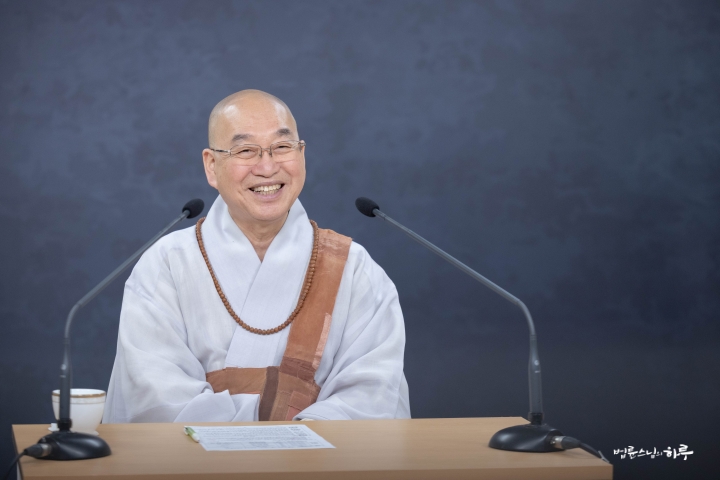
Practice is about managing one’s mind to avoid getting angry. On the other hand, ‘how to respond’ is a separate matter. If improvement is needed, make improvements; if not, that’s fine too. The important thing is that responding without anger is much more effective. When you don’t get angry, you don’t suffer, and improvements happen more easily. For example, when someone carelessly throws trash, you can just leave it, tell them they shouldn’t throw it there, clean it up yourself, or report it to the authorities. If you understand that ‘from their perspective, they might do that,’ you won’t get angry, and from that state, you can choose how to respond. There are various methods. When you’re not angry, you can respond appropriately according to the situation.”
After finishing the conversation, it was past 4 PM. Unfortunately, Sunim concluded the Dharma Q&A with the promise of meeting again next time.
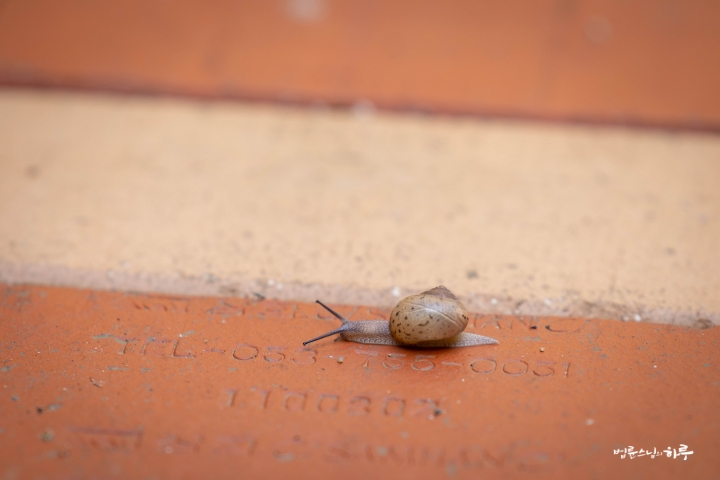
After finishing the Dharma talk, Sunim left the broadcasting room and immediately changed into work clothes and headed to the vegetable garden. The lettuce was growing densely.
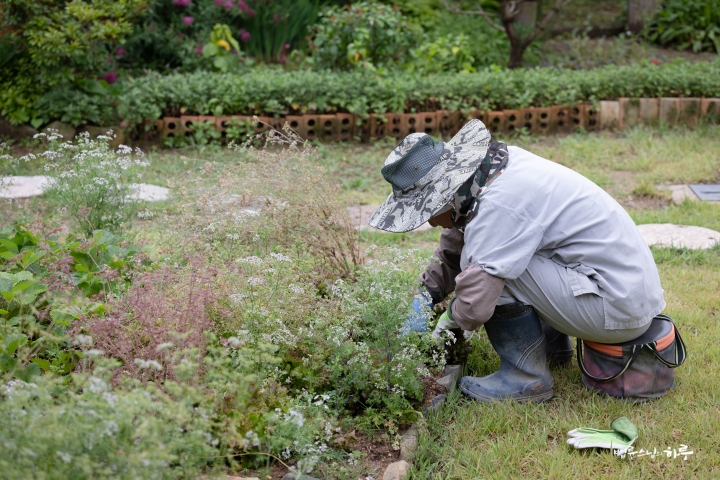
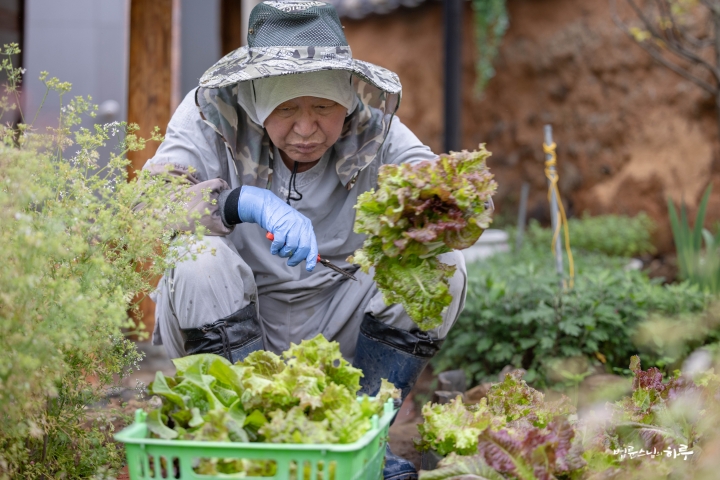
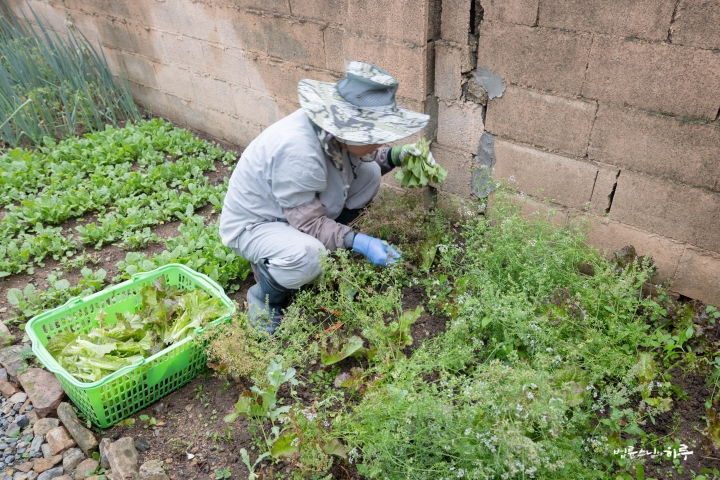
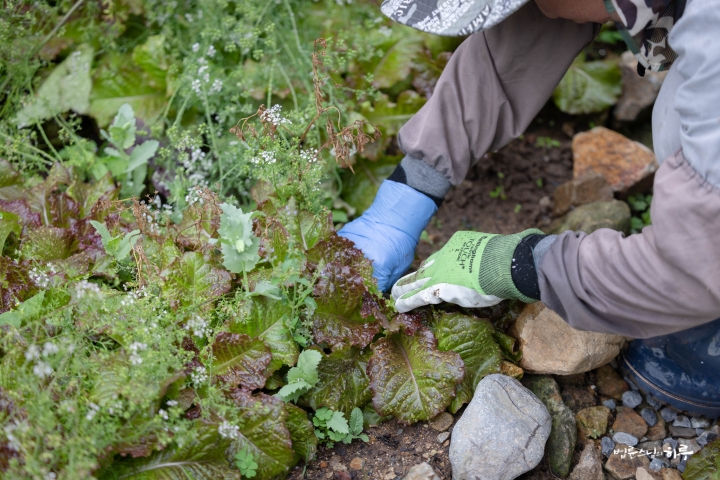
Sunim picked the leaves close to the stem from the lettuce that hadn’t bolted.
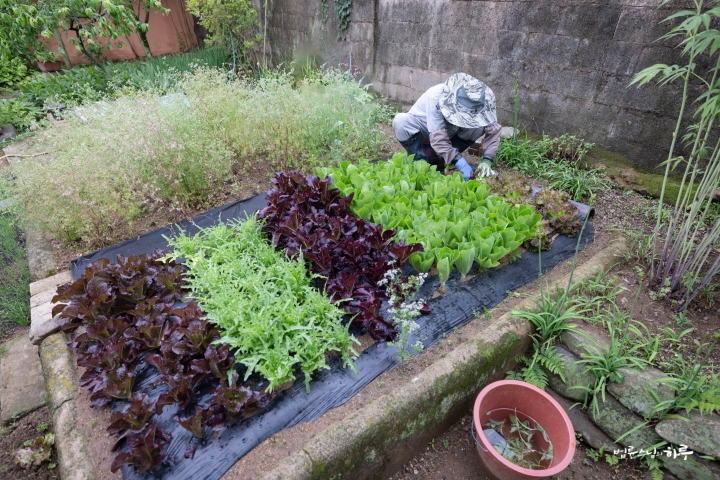
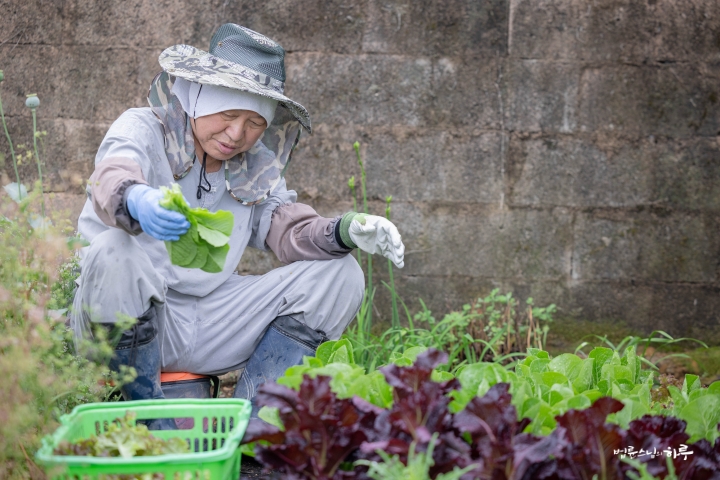
After thinning out the leaves, spaces appeared in what had been a crowded lettuce patch. Various types of lettuce were divided and placed into six baskets.
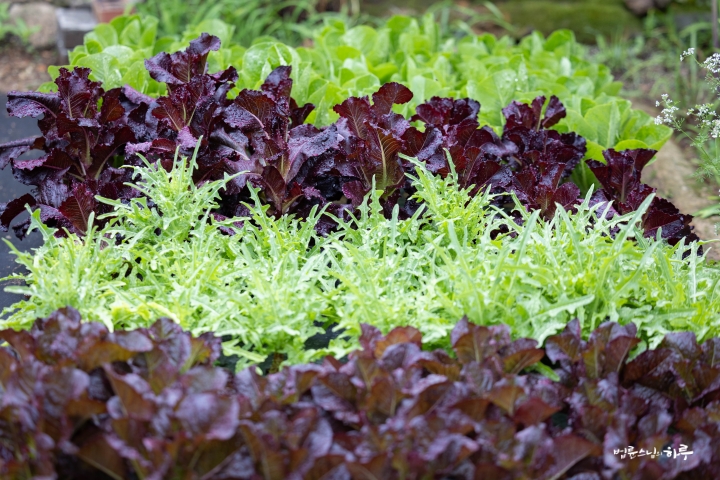
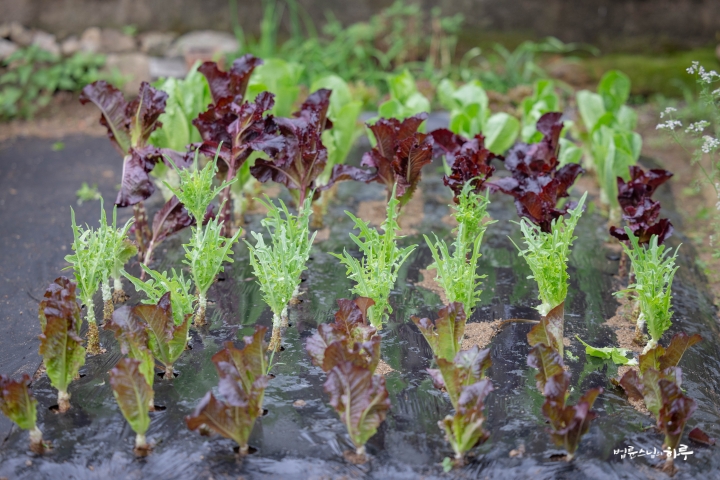
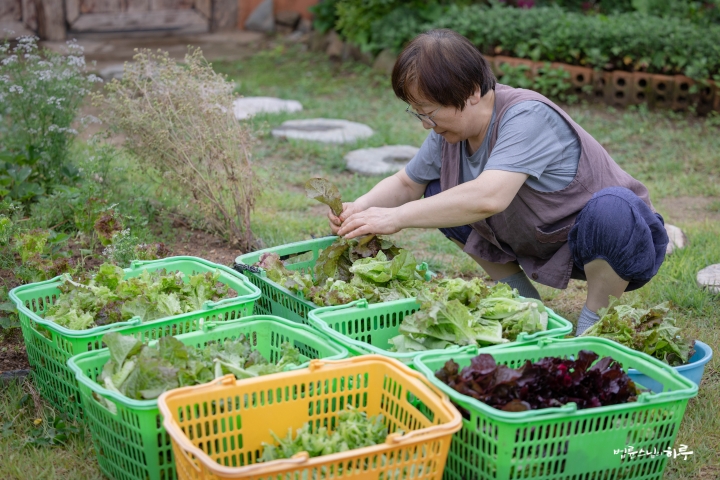
Meanwhile, all the lettuce that had bolted was pulled out. When they flower, the leaves become tough and difficult to eat. After tilling the field, lettuce seeds were evenly sown again.
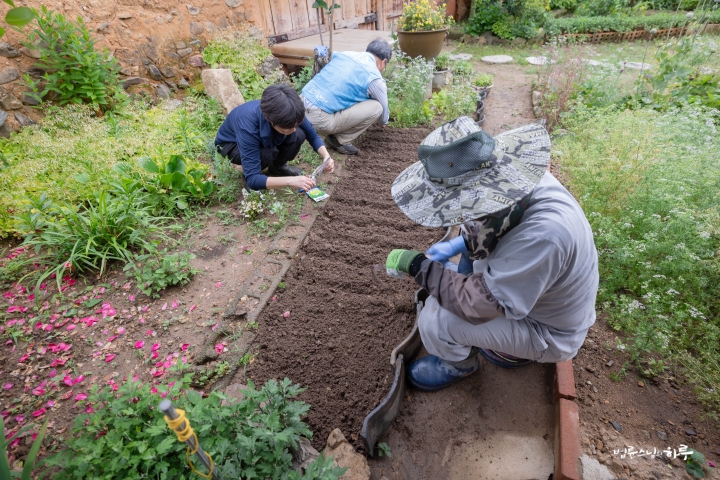
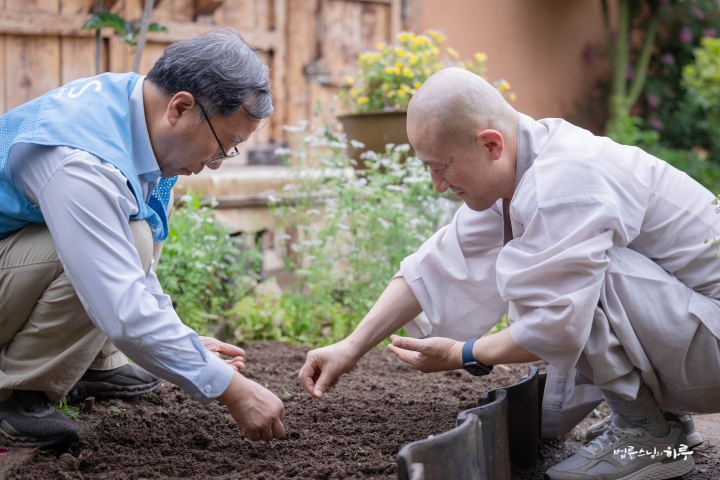
Due to the rain, a lot of soil had splashed onto the lettuce leaves. After lightly rinsing them in water, they were neatly arranged in boxes.
“Let’s take these so the Seoul Sangha members can enjoy them.”
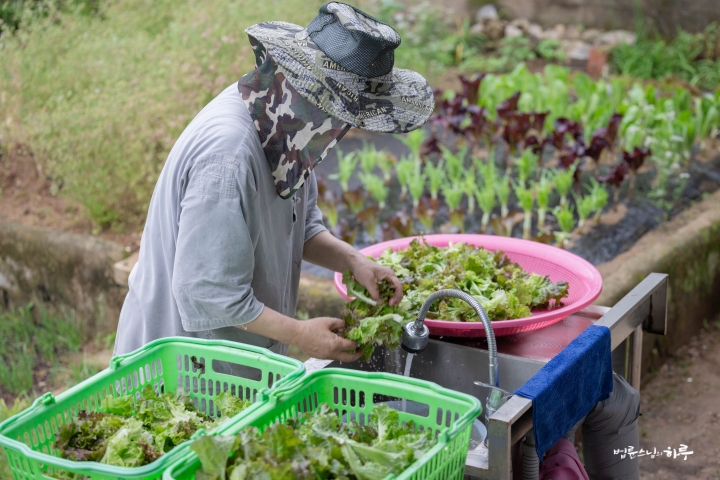
The work finished at 6 PM. In the evening, Kim Yoon-tae and Ahn Sang-hee, who are in charge of the Sankasia project in India, returned to Korea and came to pay their respects to Sunim. After having dinner together, Sunim held a meeting to discuss how to proceed with the Sankasia project before concluding the day’s activities.
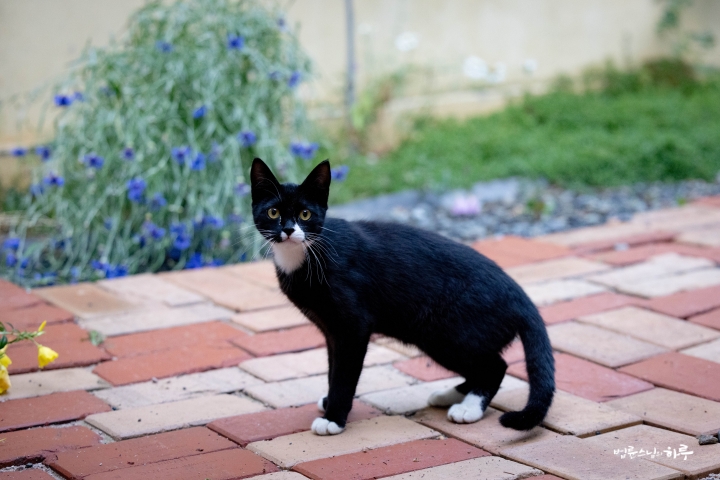
Tomorrow, Sunim will travel to Daejeon early in the morning to attend the ‘Happy Citizens Activity Festival’ all day, have conversations with Happy Citizens, and then move to Seoul.






Wow the fresh lettuce . I want to be a Sanga Member to taste this fresh lettuce. And the cat is very cute.
Thanks for preparing this valuable content. I’ve learned a lot from ‘a day in the life of Sunim’.